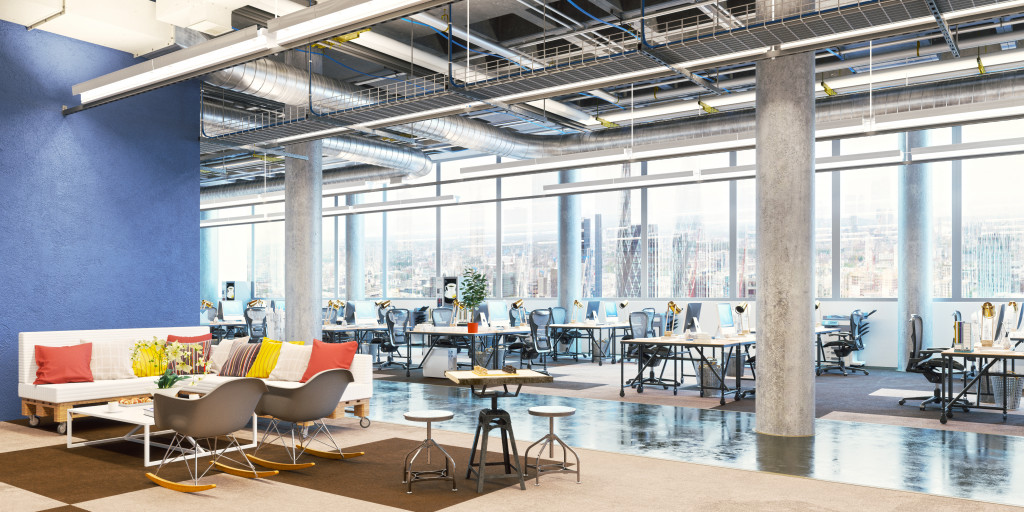It’s no secret that a well-designed office space can increase productivity and creativity. According to a study, productivity can be increased by up to 20% in well-designed spaces. Employees are also less likely to experience sick days and burnout. So it is crucial to take the time to design an efficient office space.
Here are some tips to keep in mind when designing your office space.
1. Create a logical layout.
When designing your office space, it is essential to create a logical layout. The layout of your office should be efficient and allow for easy navigation. You want your employees to move around quickly and get to their workstations without difficulty. If your office is too cluttered or has too many obstacles, it will only hinder productivity.
Some popular office layouts include an open concept, a cubicle layout, and a private office layout. These are just a few of the many options that you have to choose from. Depending on the size of your office and the number of employees, you will have to decide which layout is best for you.
If you want what’s best for your company, you want to work with a professional architect and office designer to create a custom layout that is perfect for your needs. They can help you make the most of your space and create a functional and stylish design.

2. Choose the right furniture.
Comfort is also essential when it comes to designing an efficient office space. If your employees are not comfortable, they will not be able to focus on their work. That is why choosing the right furniture for your office space is essential. You want to ensure that the chairs and desks are comfortable and offer the proper support.
There are a lot of different options when it comes to office furniture. You can find everything from modern and sleek designs to more traditional and rustic pieces. Some offices opt for ergonomic furniture to promote a healthy working environment. It is important to find furniture that fits your style and needs. It all depends on your preference and the overall feel of your office space.
3. Add some greenery.
Studies have shown that adding some greenery to your office space can improve productivity. When stressed, our bodies release cortisol, which can have a negative impact on our health. Adding some plants to your office can help reduce stress levels and improve air quality.
If you don’t have a green thumb, don’t worry. Many low-maintenance plants are perfect for the office. Some of the best options include succulents, snake plants, and spider plants. These plants can thrive in a variety of conditions and don’t require a lot of care. You can even find artificial plants that look as good as the real thing.
If you want to add some greenery to your office space, there are a few things that you need to keep in mind. First, you need to choose the right plants. Not all plants are created equal; some require more care than others. Second, you must ensure that you have enough space for the plants. They need room to grow and thrive. Lastly, you need to ensure that they have the proper lighting. Depending on the type of plant, they might need direct sunlight or do better in a more shaded area.
4. Incorporate natural light.
Natural light is essential for both physical and mental health. According to a study, exposure to natural light can improve mood, increase productivity, and reduce stress levels. If possible, you want to design your office space to allow plenty of natural light.
This might mean placing your desk near a window or adding skylights to the space. If you don’t have a lot of natural light, you can add some artificial lighting. LED lights are a great option because they emit little to no heat and are very energy-efficient. When choosing artificial lights, you want to ensure they are not too harsh or bright.
5. Use colors wisely.
Finally, the colors that you choose for your office space can also have an impact on productivity. Many people believe that specific colors can inspire creativity or help people focus. While there is no scientific evidence to support these claims, it might be worth considering the impact of color when designing your office space.
Some people believe that cool colors like blue and green are ideal for an office space because they promote a feeling of calm. Others prefer warmer colors like red and yellow because they believe that they increase energy levels. Ultimately, it is up to you to decide what colors you want to use in your office space. Just make sure that they are not too overwhelming or distracting.
Designing an efficient office space is about creating a space that works for you. Many people overlook the importance of office design and how it can impact productivity. However, there are a few simple things that you can do to make your office more efficient.
The tips mentioned above are just a few of the many things you can do to improve your office space. Always remember that the most important thing is to find what works for you. So, experiment with different ideas and see what works best for your needs.